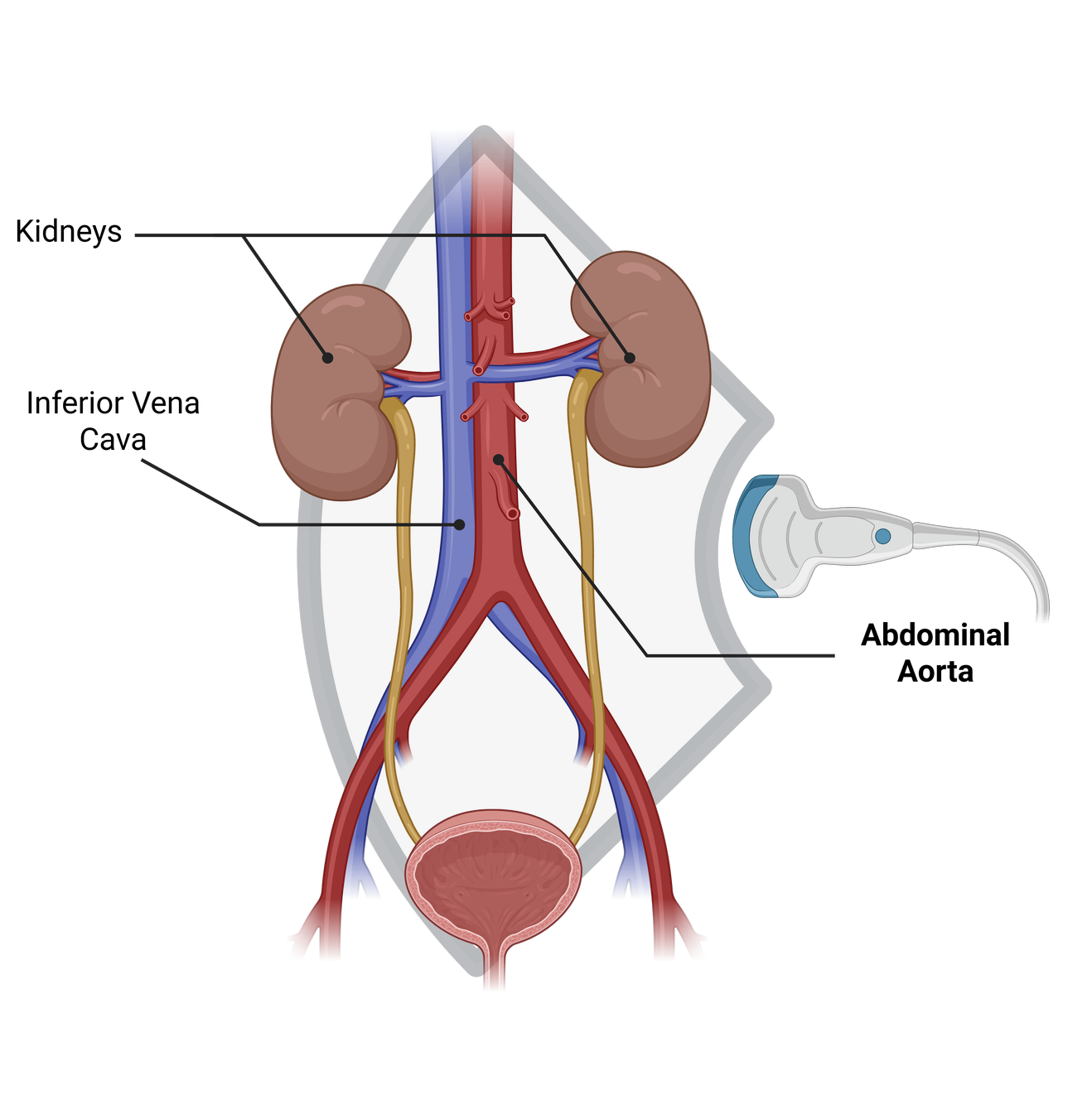Abdominal Ultrasound
Overview
An abdominal ultrasound is a simple, non-invasive test that uses sound waves to create live images of the abdominal aorta, the main vessel carrying blood from the heart to the lower body. During the test, a gel is placed on your stomach, and a small handheld device called a transducer/probe is gently moved across the skin. The sound waves bounce off the aorta and appear as moving pictures on a screen.
Ultrasound is often used to screen for an abdominal aortic aneurysm (AAA). It shows the size and shape of the aorta and helps doctors monitor aneurysms over time.
How It Works
The transducer sends out high-frequency sound waves that travel through the body. These waves reflect back from the aorta and other tissues, and a computer turns them into real-time images. The test is painless and usually takes less than 30 minutes. You can breathe normally throughout, although you may be asked to hold your breath briefly to improve image quality.
When It’s Used
Doctors use abdominal ultrasound to:
Check for an abdominal aortic aneurysm.
Measure the size and growth of an existing aneurysm.
Screen people at higher risk, such as men over age 65 who have ever smoked.
Monitor the aorta after repair or surgery.
Because it is fast, safe, and does not involve radiation, ultrasound is often the first test used for aortic screening.
What It May Not Find
While very useful, abdominal ultrasound has some limitations:
It may not show all parts of the aorta clearly if bowel gas, obesity, or deep positioning of the vessel is present.
It cannot reliably detect small tears or subtle changes in the vessel wall.
It provides less detail than CT or MRI when precise surgical planning is needed.
For these reasons, CT or MRI scans are often done when more detailed imaging is required.
Complications
Abdominal ultrasound is extremely safe:
It uses no radiation or contrast dye.
The sound waves used have no known harmful effects.
You can resume normal activities immediately after the test.
How It Is Useful in Aortic Disease
Ultrasound is especially valuable for:
Detecting abdominal aortic aneurysms and tracking their growth.
Screening people at risk before symptoms appear.
Providing regular follow-up after surgery or treatment.
Because it is safe, simple, and reliable, abdominal ultrasound remains one of the most important tools for detecting and monitoring aortic disease.


